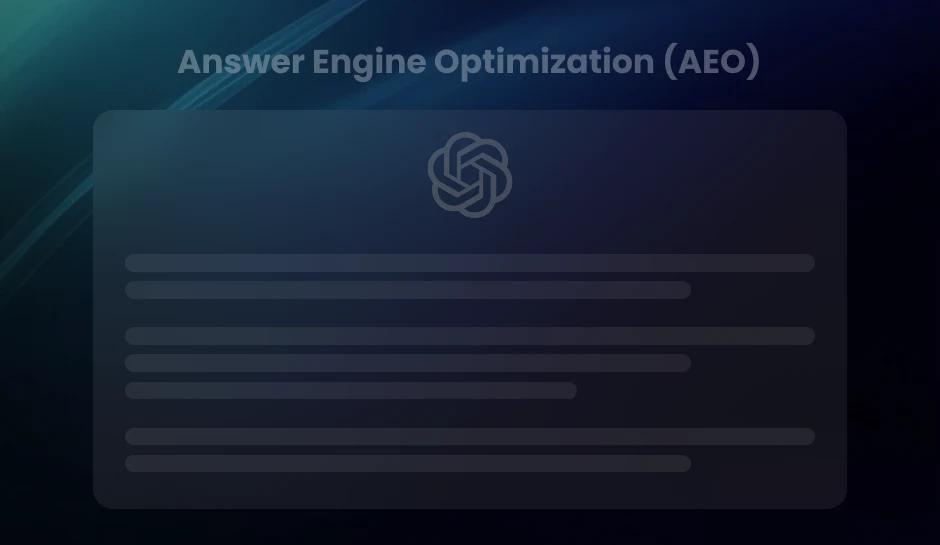
How Attribution Management Examples Are Changing Business Performance in 2025
Attribution management has become a crucial tool for businesses. It helps teams make informed decisions, optimize marketing efforts, and allocate resources effectively, resulting in better alignment and increased revenue performance across departments.
Attribution management has evolved into a strategic asset for growth-focused businesses. In 2025, it is no longer confined to marketing reports. It now shapes how companies drive performance, optimize resources, and align their teams.
With longer buying cycles, more stakeholders, and growing channel complexity, businesses can no longer rely on guesswork. Attribution management offers the clarity to see what truly drives momentum, not just what gets noticed.
It is not enough to measure what worked last quarter. Leaders now demand insight into what will work next. Attribution management provides the data needed to make faster, more confident decisions across the entire customer lifecycle.
This shift is pushing attribution to the center of strategic planning. Marketing, sales, product, and customer success teams are using attribution insights to align efforts, reduce inefficiencies, and prioritize what drives results.
In this blog, we will explore how attribution management examples are not only improving marketing performance but also transforming overall business outcomes in 2025.
Attribution As A Revenue Performance Enabler
Did you know that attribution management was created to solve a big problem marketers face? It is about understanding the true impact of every customer interaction on revenue. Before attribution models, marketing teams were stuck relying on basic metrics like last-click conversions and lead volume. These metrics only gave a narrow view of the customer journey, making it difficult to understand the full picture.
So, you might be wondering: how does attribution change the game?
Well, it’s simple. Attribution models allow teams to trace every interaction, from the first click to the final purchase. This means no more guessing which touchpoints made the difference. For the first time, marketing leaders could make decisions based on real data, not assumptions.
Attribution has completely reshaped how marketers think about performance. Instead of just tracking what’s working, attribution shows how each touchpoint across the customer journey contributes to revenue. It is like getting a backstage pass to everything that drives business growth. This clarity allows teams to focus their efforts where they matter most, ensuring resources are spent wisely on what truly works.
How Were Marketing Decisions Made Before Attribution Models?
Think back to when marketing was driven by simple metrics—clicks, impressions, and last-click conversions. Those numbers gave marketers something to track, but they were just part of the story. There was no clear picture of which channels, messages, or touchpoints led to a sale, leading to marketers making decisions based on incomplete data.
Attribution changed this by providing a complete picture of the customer journey. With attribution models, businesses could now track every touchpoint along the way, whether it was an ad, an email, or a piece of content and understand its true impact on revenue. This shift meant no more relying on outdated or isolated metrics. Instead, marketing leaders could make data-backed decisions that directly influenced ROI.
Benefits of Attribution Management for Revenue Performance:
- Optimize Resource Allocation
- Increase Marketing Efficiency
- Enhance Lead Quality
- Boost Sales Alignment
- Drive Informed Decision-Making
By tracking every touchpoint, marketing teams can stop making guesses and start making decisions that have a direct impact on revenue. This clarity is not just theoretical, it has been put into action by businesses seeing substantial growth by leveraging these insights.
Want to see how this looks in practice? Here’s how one company turned attribution data into a powerful tool for success.
How Attribution Helps in Real-World Scenarios
You might be asking yourself, “Does attribution really make a difference in day-to-day marketing?”
Well, yes!
Take a moment to think about all the moving parts in a business. From the first ad a customer sees to the email they open, the content they engage with, and finally, the decision to make a purchase, it’s a journey with multiple touchpoints. But what if you could track how each of those touchpoints contributes to the end result? What if you could pinpoint exactly which actions led to conversions, instead of simply assuming that your last email or the most recent ad did all the heavy lifting?
Let’s look at how one company used attribution to transform its marketing strategy and drive revenue.
Example: Optimizing High-Intent Pathways
Have you ever wondered why some leads move faster through the funnel than others? Or why certain prospects convert with less resistance and remain loyal for longer? One company asked the same questions. Attribution gave them answers.
- The Discovery: Early Engagement with Education Drives Better Outcomes
- The Change: Shaping Go-To-Market Around High-Intent Behaviors
- The Impact: Attribution Redesigns the Buyer Journey
This company took a close look at its attribution data and found a valuable pattern. Customers who engaged with educational resources early in the journey, such as webinars or implementation guides, converted faster and churned less.
Before attribution, that insight was hidden. Content was being shared, but no one fully understood how it impacted outcomes. It was treated like a nice-to-have, not a strategic tool.
Once they uncovered this trend, the company changed direction. Marketing began prioritizing educational content earlier in the funnel. The goal was simple. Reach buyers when they are curious, not just when they are ready to buy.
They also updated their lead scoring model. Engagement with product education became a signal of readiness. Sales started spending more time on leads who were showing real intent.
This shift did more than improve performance. It reshaped the way the company viewed the customer journey. Attribution became a planning tool, not just a reporting method.
When you know what drives the right behavior, you stop reacting. You start designing journeys that lead customers toward better outcomes. Attribution makes that possible.
Attribution’s Role in Agile Budgeting and GTM Strategy
Budgeting is no longer a finance-led exercise. In high-growth environments, attribution data turns spend management into a continuous, performance-led process that unites marketing, sales, and revenue teams around shared outcomes.
Real-Time Adjustments Through Attribution Insights
Before attribution, budgets were typically fixed for the quarter, with any reallocation happening only after a quarterly review. This reactive approach often meant missed opportunities. With attribution, marketing teams can adjust strategies and budgets in real time, ensuring their efforts are always aligned with what is driving revenue.
Here’s how attribution allows for quick adjustments:
- Instant Evaluation:
- Performance-Driven Decisions:
- Smart Resource Allocation:
Attribution provides immediate insights into channel performance, allowing marketers to reallocate resources to the highest-performing touchpoints, eliminating wasted spend.
Attribution empowers teams to assess not just conversion rates but also early-stage engagement, helping them identify high-intent channels faster.
It ensures resources are directed toward campaigns with the most potential, based on clear, data-backed evidence.
Shifting From Reactive to Proactive Resource Management
Attribution transforms traditional budgeting cycles from being reactive to proactive. By monitoring how campaigns are performing throughout the month, attribution allows teams to be nimble, shifting spend and strategy based on data instead of waiting for end-of-quarter reviews.
For example:
- Mid-Campaign Adjustments:
- Buyer Journey Refinement:
- Dynamic Spend Reallocation:
If a certain channel is overperforming, attribution allows teams to quickly reallocate additional budget to maximize ROI.
Attribution helps identify which stages of the buyer journey generate the most engagement, allowing teams to optimize content, targeting, and spend mid-cycle.
Teams can pause underperforming campaigns, ensuring that budget isn’t wasted on initiatives that are not delivering high-quality leads.
Aligning Cross-Functional Teams with Real-Time Data
Attribution does not just benefit marketing teams; it aligns sales, product, and customer success teams too. It provides a unified view of which buyer touchpoints are driving the most value, ensuring every team is focused on high-impact activities.
Here’s how attribution benefits team alignment:
- Cross-Functional Collaboration:
- Funnel Transparency:
- Revenue-Focused Execution:
Sales can focus on leads showing strong intent, while marketing can adjust messaging and content based on which touchpoints are most effective.
Sales and marketing leaders can jointly analyze attribution data to understand which campaigns are influencing deals, shortening sales cycles.
Attribution data ensures that all teams are working from the same set of facts, aligning efforts to meet overall revenue goals.
Impact on Forecasting and Resource Planning
Attribution plays a crucial role in refining forecasting accuracy. Instead of relying on broad assumptions or outdated metrics, attribution allows for more precise predictions by tracking the entire buyer journey.
Key impacts of attribution on forecasting include:
- Improved Forecasting Accuracy:
- Faster Adjustments to Market Changes:
- Data-Backed Resource Planning:
Attribution allows for better prediction of future sales by tracking buyer interactions across multiple touchpoints, ensuring forecasts are based on actual data.
Teams can respond quickly to market shifts, adjusting strategy or campaigns before they lose valuable opportunities.
Attribution helps teams allocate budgets based on current performance trends, ensuring every dollar spent is maximizing the likelihood of hitting revenue targets.
Pro Tip- Attribution turns budgeting from a quarterly exercise into a continuous, real-time optimization process. By integrating attribution data into weekly standups and monthly resource meetings, teams can make smarter, faster decisions, ultimately driving higher revenue with more efficient spend.
Example: Leadership-Level Decision-Making
Executive decision-making requires a clear understanding of performance, trends, and potential growth areas. DiGGrowth recently helped a SaaS company enhance its attribution model, providing leadership teams with the insights necessary to make more data-driven decisions.
The Challenge: Lack of Visibility into Revenue Drivers
Before implementing an attribution model, the company was facing significant challenges. Despite tracking traditional metrics, leadership teams struggled to answer key questions like:
- Which marketing channels were truly driving revenue?
- What stages of the buyer journey contributed most to conversions?
- How could the company better allocate resources to improve revenue performance?
Without clarity on these issues, the leadership team found it difficult to make timely decisions about resource allocation, campaign adjustments, or even strategic pivots.
DiGGrowth’s Approach: Implementing Attribution for Actionable Insights
DiGGrowth worked closely with the company to implement a tailored attribution model that captured the entire customer journey. The model focused not just on direct conversions but also on the role of each touchpoint in nurturing prospects, moving them from awareness to purchase.
Here is how DiGGrowth helped:
- Integrated Data Sources:
- Custom Reporting Dashboards:
- Focus on Long-Term Impact:
DiGGrowth integrated data from various marketing channels (emails, paid ads, organic content) into a unified attribution model, offering a holistic view of the customer journey.
DiGGrowth designed custom dashboards that provided leadership teams with real-time insights into campaign performance, budget allocation, and high-impact touchpoints.
The attribution model not only measured immediate conversions but also identified long-term drivers of customer retention, helping leadership make decisions that aligned with sustainable growth.
The Outcome: Empowering Leadership with Real-Time Data
With the new attribution model in place, the leadership team had access to a clear, real-time view of the performance of every touchpoint in their marketing strategy. Here’s how it changed their decision-making process:
- Smarter Resource Allocation:
- Improved Campaign Adjustments:
- Increased Strategic Collaboration:
Leadership could now identify which marketing channels contributed most to high-value leads. As a result, they reallocated spend away from underperforming channels and focused on those driving long-term revenue growth.
Instead of waiting until the end of the quarter to assess campaign performance, the leadership team was able to make timely adjustments based on live attribution data, boosting ROI on their marketing investments.
Attribution insights encouraged deeper collaboration between the marketing, sales, and product teams, ensuring everyone was aligned on where to focus efforts and resources for the greatest impact.
Conclusion: The success story of DiGGrowth’s work with this SaaS company clearly demonstrates the transformative power of attribution in leadership decision-making. By moving away from traditional, siloed metrics and embracing a comprehensive attribution model, the leadership team gained the clarity and confidence to make real-time, data-backed decisions.
Key Takeaways
- Attribution aligns marketing, sales, and customer success teams around shared revenue goals, fostering better collaboration and accountability.
- By tracking every customer interaction, attribution helps marketers identify which touchpoints truly contribute to revenue.
- Businesses now leverage real-time attribution data to adjust marketing strategies and resource allocation immediately, improving efficiency and ROI.
- Leadership teams use attribution insights to make data-driven decisions, improving resource management and accelerating strategic growth.
Conclusion
Attribution management is no longer just a tool for tracking marketing efforts. It has evolved into a powerful strategy that empowers businesses to make data-driven decisions, optimize performance, and drive revenue growth. By understanding the true impact of each customer touchpoint, companies can better allocate resources, refine their marketing strategies, and align sales, marketing, and customer success teams toward common revenue goals.
In 2025, businesses that leverage attribution models are no longer guessing about what works. They have clear, actionable insights that enable them to make confident decisions across every stage of the customer journey. Whether it’s optimizing your resource allocation, improving lead quality, or adjusting your budget in real-time, attribution is the key to unlocking growth.
Want to see how attribution can change your game? Let’s talk and make it happen!
Contact us at info@diggrowth.com to discuss how we can help you implement a tailored attribution model that fuels better decision-making and sustainable growth.
Ready to get started?
Increase your marketing ROI by 30% with custom dashboards & reports that present a clear picture of marketing effectiveness
Start Free Trial
Experience Premium Marketing Analytics At Budget-Friendly Pricing.

Learn how you can accurately measure return on marketing investment.
Additional Resources
Don’t Let AI Break Your Brand: What Every CMO Should Know
AI isn’t just another marketing tool. It’s changing...
Read full post postFrom Demos to Deployment: Why MCP Is the Foundation of Agentic AI
A quiet revolution is unfolding in AI. And...
Read full post postAnswer Engine Optimization (AEO): The New Frontier of SEO in 2025
As digital experiences continue to evolve, so does...
Read full post postFAQ's
Attribution reveals which touchpoints influence long-term engagement, helping teams understand what drives loyalty. This enables personalized nurturing and better resource planning to retain high-value customers.
Yes, attribution data highlights which assets contribute to conversions and which don’t. This helps marketers refine content strategies and invest only in pieces that support pipeline and revenue.
Sales, product, and customer success teams benefit by understanding which actions lead to conversions, allowing them to tailor conversations, prioritize leads, and improve onboarding experiences.
Absolutely. While AI aids in prediction and automation, multi-touch attribution ensures transparency by showing the actual contribution of each channel and interaction across the journey.
Machine learning enhances attribution models by analyzing vast amounts of data, identifying patterns, and predicting which touchpoints are most likely to lead to conversions. This approach continuously improves decision-making over time, refining marketing strategies.


